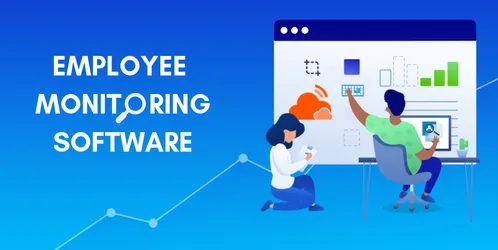In today’s rapidly evolving work landscape, where remote work is becoming the new norm, businesses face unique challenges in ensuring productivity, efficiency, and security. As teams disperse to work from home offices, maintaining oversight becomes crucial. This is where Employee Monitoring Software steps in, offering comprehensive solutions to streamline operations and safeguard sensitive data even in decentralized work environments.
The Rise of Remote Work
The COVID-19 pandemic accelerated the adoption of remote work, transforming it from a perk to a necessity for many businesses. While remote work offers flexibility and cost savings, it also introduces complexities in managing teams dispersed across various locations. Without physical supervision, employers may find it challenging to gauge productivity levels and ensure adherence to company policies.
The Need for Employee Monitoring Software
Employee Monitoring Software addresses these concerns by providing tools to track work activities, measure productivity, and maintain compliance. By leveraging advanced features such as time tracking, screen monitoring, and activity logging, employers can gain insights into how employees allocate their time and identify potential bottlenecks or distractions.
Benefits of Employee Monitoring Software
- Enhanced Productivity: With real-time monitoring capabilities, employers can identify inefficiencies and provide timely support to improve productivity. By tracking time spent on tasks and projects, managers can allocate resources effectively and optimize workflows.
- Remote Team Collaboration: Collaboration tools integrated into Employee Monitoring Software facilitate communication and collaboration among remote teams. Features like chat functionalities, file sharing, and project management tools foster teamwork and ensure seamless coordination regardless of physical distance.
- Data Security and Compliance: Protecting sensitive data is paramount, especially in remote work setups where information may be more vulnerable to security breaches. Employee Monitoring Software helps enforce security protocols, monitor access to confidential data, and ensure compliance with regulatory requirements.
- Employee Accountability: Transparent monitoring fosters a culture of accountability and encourages employees to stay focused and productive. Knowing their activities are being monitored, employees are more likely to adhere to company policies and work diligently to meet objectives.
- Insightful Analytics: Employee Monitoring Software generates detailed analytics and reports, offering valuable insights into employee performance trends, workflow patterns, and areas for improvement. By analyzing these metrics, employers can make informed decisions to optimize resource allocation and maximize productivity.
Home Office Monitoring
In the context of remote work, home office monitoring becomes crucial for ensuring that employees maintain a conducive work environment and adhere to company policies. Employee Monitoring Software extends its capabilities to monitor home office environments, including internet usage, device activity, and compliance with security protocols.
Conclusion
As remote work continues to reshape the modern workplace, businesses must adapt by embracing innovative solutions like Employee Monitoring Software. By leveraging these tools, employers can empower their remote teams to thrive while maintaining productivity, collaboration, and security. With the right approach to monitoring and support, organizations can unlock the full potential of remote work and drive sustainable growth in the digital age.
